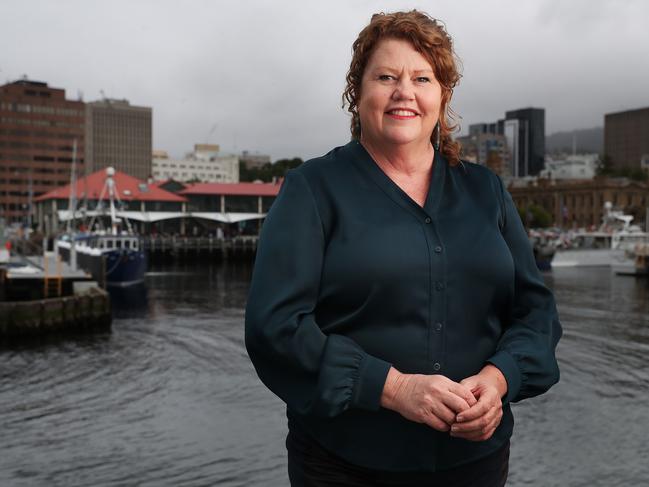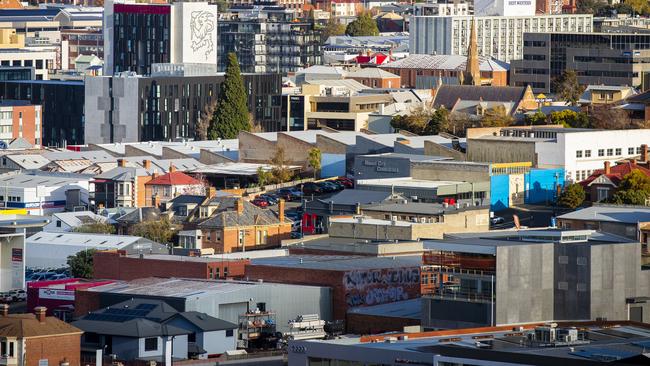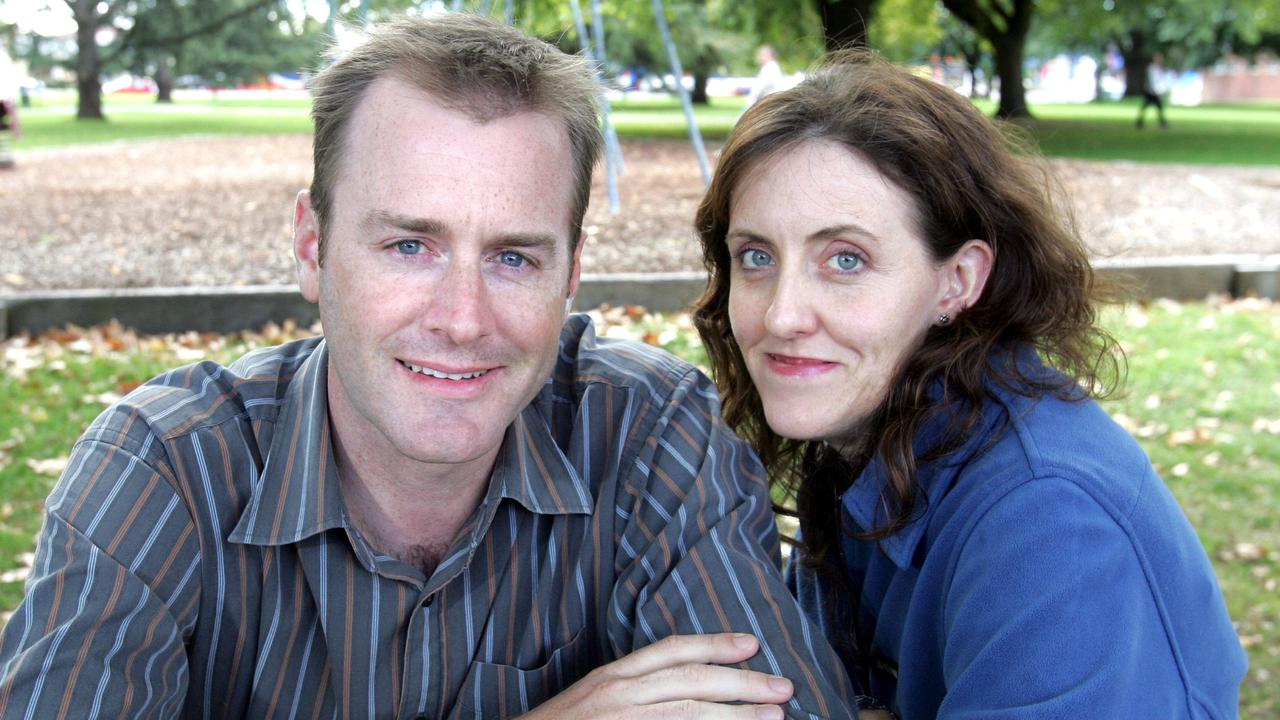Tasmanian government must expand State Service to cater for population growth: Anna Reynolds
The four Greater Hobart mayors say the city will look very different in a decade if its population grows to the level being forecast by the federal government.

Tasmania
Don't miss out on the headlines from Tasmania. Followed categories will be added to My News.
The Tasmanian government needs to establish a dedicated planning department, public transport authority and state architect’s office if it is to effectively prepare for projected population growth over the next decade, Hobart Lord Mayor Anna Reynolds says.
The state’s population is expected to reach 647,000 in 2032-33, according to new figures from the federal government’s Centre for Population, released on Friday.
The 2022 Population Statement anticipates the population of Tasmania will grow from 568,000 (as at June 30, 2021) to 647,000 in 2032-33, equating to a total increase of 79,000 people.
Greater Hobart’s population is predicted to increase from 251,000 to 298,000 over the next 10 years.

Ms Reynolds said the projections were a “signal” that the state had to be “much more prepared for growth and managing change”.
“That does require some quite significant additional skills and capacity inside the state government so that we’ve got some of the similar key institutions that other growing states have had for a number of years,” she said.
The Lord Mayor believes the government should set up a public transport authority and a stand-alone planning department within the State Service, as well as resurrect the state architect role, which was scrapped in 2012.
“We need to ensure that we’re lifting our state institutions and agencies and expertise to really work with local government, as well, in managing this kind of population growth and ensuring that we’re able to actually manage the cities and the state more generally in this period of rapid change,” she said.
Clarence’s population has experienced a growth of 19 per cent over the last decade, making it the fastest growing municipality in the Greater Hobart area.
Mayor Brendan Blomeley said “the city as we know it will not look the same in the future”.

“We know Clarence Plains is the fastest growing area in Tasmania, with predictions of it housing more than 20,000 people by 2035,” he said. “We’ve been planning for this, and are on track to deliver through the development of the Clarence Plains Master Plan which is expected to be adopted by council early this year.”
Meanwhile, in Kingborough, more than 20 per cent of residents were born overseas and the 40,000-strong population is expected to grow “rapidly” in the coming years, Mayor Paula Wriedt said.
“Growing our population will help increase the diversity of our community, as well as growing our economy,” she said.
Ms Wriedt said a growing population meant greater pressure on the area’s infrastructure, as well as more traffic, and that many of the council’s “pleas” to the state and federal governments for additional investment in roads, traffic management, housing, and community sporting facilities had gone “unanswered”.
Similarly, Glenorchy Mayor Bec Thomas said a ballooning population would lead to a heavier burden being placed on infrastructure and services in Hobart’s northern suburbs.
“Local government in Tasmania does its best, however currently we don’t have all the tools required to support growth of this magnitude into the future,” she said.
Future of Tas: Projected population on back of overseas migration
Tasmania’s population is projected to reach almost 650,000 over the course of the next decade, driven largely by growth in overseas migration.
The federal government’s Centre for Population will release the 2022 Population Statement on Friday, detailing the demographic outlook for Australia into the future.
An excerpt of the report, seen by the Mercury, shows that Tasmania’s population is expected to grow from 568,000 (as at June 30, 2021) to 647,000 by 2032-33 – a total increase of 79,000 people.
Greater Hobart is predicted to see an influx of 47,000 people, bringing its total population to 298,000, while the rest of Tasmania will welcome 31,000 additional people, bringing its total population to 348,000.
It’s believed net overseas migration will add 0.7 percentage points to the state’s population growth rate in 2025-26, up from -0.1 points in 2020-21.
“Tasmania experienced strong population growth in the three years before the pandemic, growing by an average of 2.2 per cent per year,” the report says.
“This was well above the 0.3 per cent average population growth it experienced between 2009-10 and 2013-14.”

However, annual population growth declined to 0.8 per cent in 2020-21 due to the drop in overseas migration as a result of Covid-related border restrictions.
The state’s growth rate is expected to improve to 1.3 per cent in 2021-22 as overseas migration levels recover.
“This is a return to more moderate levels of growth than experienced immediately before the onset of the pandemic,” the report says. “Population growth is projected to slowly decline to 1 per cent by 2032-33, when Tasmania’s population is projected to reach 647,000.”
Net overseas migration growth is forecast to be the “primary driver” of population growth in Tasmania, according to the data.
Tasmania is set to welcome 4400 overseas migrants to the state in 2024-25 alone, with the return of international students and permanent migrants.
Natural population increase was a “small but relatively stable contributor” to growth before the pandemic due to Tasmania’s “older age structure” and lower total fertility rates. It’s forecast to decrease further in 2021-22 because of a spike in the number of deaths but is tipped to recover in 2023-24 as less deaths occur.
Natural increase will then decline to 2032-33, becoming “very low” as the gap between the number of deaths and births narrows.
The report envisages net interstate migration to become “a larger contributor” to population growth in Tasmania as natural increase falls.
Tasmania’s median age is forecast to rise from 41.6 in 2020-21 to 44.3 in 2032-33.
The report notes that Hobart is the only capital city expected to experience close to zero natural increase over the next decade (0.2 per cent in 2032-33).
Net interstate migration is projected to return to pre-pandemic levels in 2023-24, with 970 net interstate moves, before it increases to 1700 in 2032-33.

Treasurer Jim Chalmers said a “healthy, growing population is vital when it comes to creating a stronger and more prosperous economy”.
“While the pandemic had significant, enduring impacts on our community and our economy, it’s clear now that our population growth is bouncing back,” he said.
Dr Chalmers said migration would be “part of the solution” to the nation’s “crippling skills and labour shortages”.
More Coverage
Originally published as Tasmanian government must expand State Service to cater for population growth: Anna Reynolds





